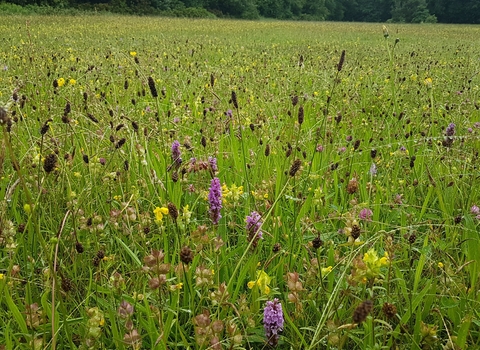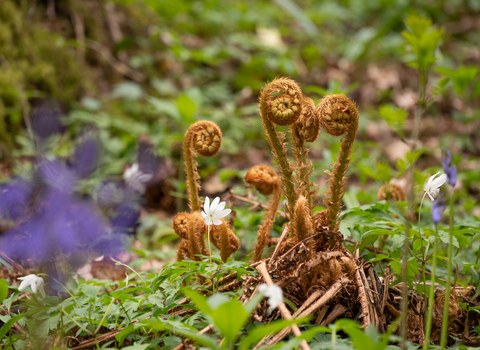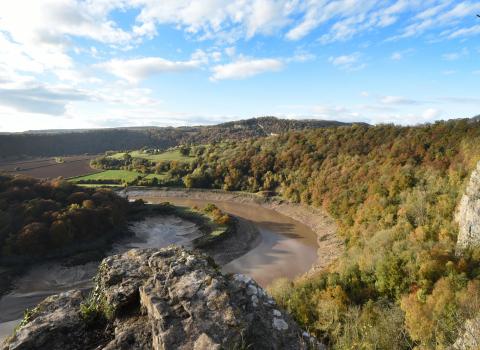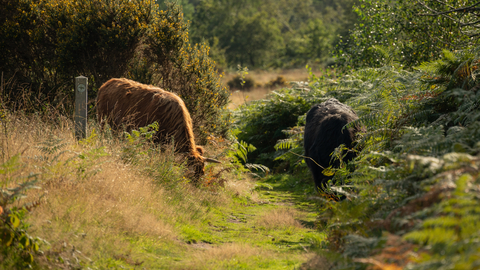
Poor's Allotment (c) Nathan Millar
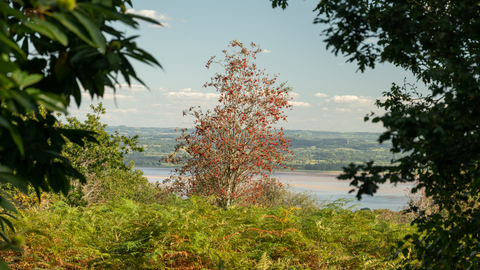
Poors Allotment (c) Nathan Millar
Fly agaric and heather at The Park nature reserve
The Park and Poor's Allotment
Location
Know before you go
Dogs
Walkers can explore both reserves, although it’s requested that dogs are kept on leads to protect ground-nesting birds and grazing animals
When to visit
Opening times
Open access throughout the yearBest time to visit
May and June for orchid spotting, and August/September for flowering heathersAbout the reserve
During the 1800s, Poor’s Allotment was established as a parcel of common land on which the people of the parish of Tidenham could graze their livestock. More than 200 years of light grazing has preserved the open nature of this reserve, which was once the location of a beacon that would carry signals across the River Severn. Poor’s Allotment was classified as a nature reserve in 1964, and from 2014 the Trust has managed the reserve on behalf of its owners, Poor’s Allotment Trustees. The Park, once part of a large estate, is managed in partnership with Forestry England.
Poor’s Allotment is an ancient heathland with rough acidic grassland and small flushes of limestone grasses, while the acidic soil supports heathers and orchids. A spring emerges into a pond in which great crested newts breed, and from here the water drops into the woodland and disappears into a sink hole caused by a patch of limestone within the sandstone. Water also passes close to the surface of the ground in the lower field, in which bog pimpernel is found alongside hundreds of heath spotted orchids.
The Park is an area of wet woodland with lowland heath previously used as a conifer plantation and now managed as a heathland restoration project to complement Poor’s Allotment. Conservation grazing by sheep, ponies and rare breed cattle is used to maintain and enhance both sites.
Keep an eye out for wading birds such as jacksnipe and the well-camouflaged woodcock. Slow worms and adders warming themselves under rocks, as well as lizards basking in sunny areas of gorse. Spring flowers such as bluebells, common spotted orchids in May and June, followed by heather in August and September. Green hairstreak butterflies visit in summer.
Future plans are to continue working hard to thin self-seeded silver birch saplings and keep on top of bracken and brambles in order to encourage the heather beneath to continue to grow. It’s hoped this work will encourage populations of silver-studded blue butterflies, which are currently extinct in the locality.
Species
Environmental designation
More detailed directions
The main access for The Park is by Tidenham Chase car park. A wide track will take you west through the middle of the nature reserve, eventually leading to Miss Grace's Lane where there is another access point. Various trails link onto other routes and around the perimeter, taking you past small ponds, stands of trees, and heathland and scrubs. Some shallow excavations hint towards the reserves ancient past as a quarry.
Poor's Allotment can be found on the opposite side of the road from the Tidenham Chase car park. The path leads you through a wooded area and to the start of a walking loops that is just under a mile in length. Other paths cross through and around the reserve so you can explore heathlands, thicket, and the small streams. To the south of the reserve you'll find the best views, across the Severn estuary to the east, though the plant life is the star of the show with the range of plants and contrasting habitats leading to it being recognised as a SSSI.
Our work on the reserves
Lesser butterfly orchid, Jack snipe, green hairstreak, tiger beetle and nightjar – these are just some of the amazing wildlife that have been found at The Park and Poor’s Allotment.
Both sites are fantastic examples of acid grassland and heathland, which, over the years, have allowed a wide range of fascinating wildlife to flourish. Twenty-five years ago or more, you may have been fortunate enough to spot the delicate spike of a lesser butterfly orchid or the distinctive flash of Britain’s only green butterfly, the green hairstreak, both of which thrive on acidic bog and heathland; today, however, such species need more than a helping hand to survive in the area.
One of the immediate priorities upon acquiring/managing these wild places was the need to manage the bracken which had dominated the area for so long, leading to the loss of species such as the lesser butterfly orchid and the bog asphodel. Tackling bracken is no quick fix but there are many methods at GWT’s disposal. “To deliver on anything, there is not just one tool,” says Land Manager Kevin Caster, who is responsible for these reserves. “Whatever we start, we must be able to continue and for bracken to become less dominant we need to deplete its energy for five continuous years.”
Poor’s Allotment has the help of local farmer, John Voyce, whose rare breed cattle do the perfect job in trampling the plant’s rootstock (rhizomes). Hardy breeds such as Highland, longhorn and Dexter cattle are ideal grazers for this type of terrain as they can survive on rough fodder, nipping off bramble tips while trampling breaks through gorse at the same time. Exmoor ponies lend a hoof in Poor’s Allotment, while Kevin has the benefit of an Alpine tractor that takes the tops off the bracken on difficult terrain, revealing the heather underneath.
Another on the to-do list is tackling the natural succession of birch trees. “There’s an overwhelming amount of birch trees that we have to cut,” says Kevin. “Birch clearance is difficult because a single stem can turn into 10 stems if not dealt with properly.” This means using professional herbicides to treat tree stumps and burning waste material. Thankfully, Kevin has a willing team of volunteers in the Dean Green Team, who each year dedicate themselves to restoration work in the reserve.
After the first winter, Kevin remarked that it “was great to see the progress made in one winter and I can now estimate how many more winters it will take to achieve our goal. I am hoping that we will have the bulk of the birch clearance done over the next five years.” A daunting task to some, but Kevin is undeterred: “The strategy is to find attractive and diverse patches within the heathland – a feature tree or a pond – and clear that area as a glade. We’re effectively cherry-picking the nice areas which we will then maintain and allow to blend organically. It’s about finding a balance which is sustainable.”
“The reserve offers nooks and crannies to explore, the best views over the River Severn and a fantastic array of wildlife in fantastic habitats,” enthuses Kevin.
A lot has been achieved in a short space of time – who knows what wonders we might once again see over the next 25 years?

